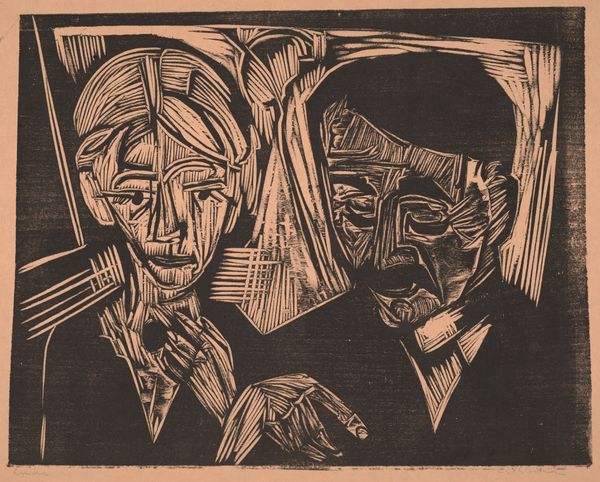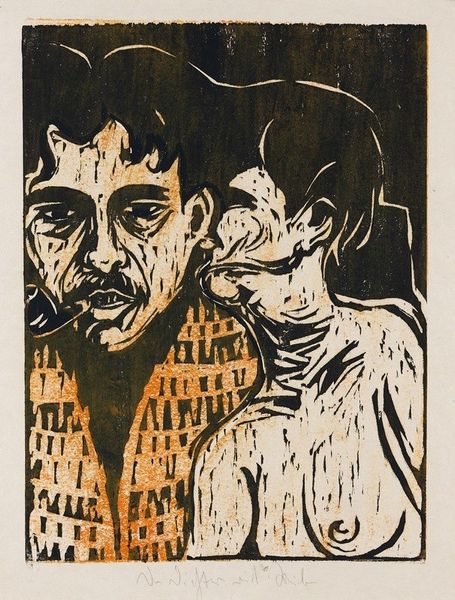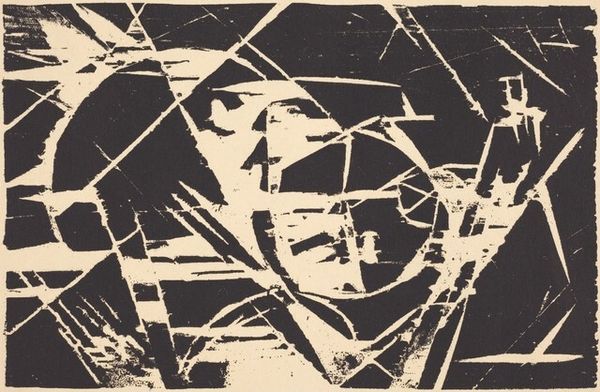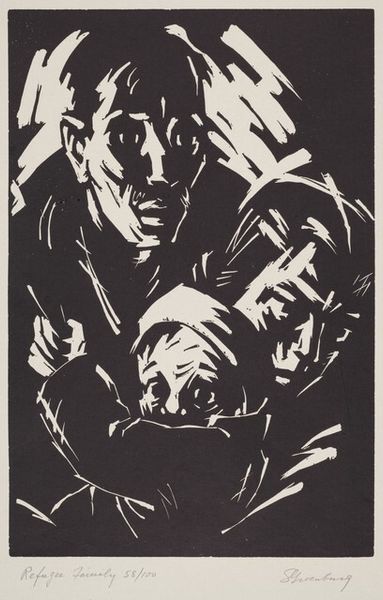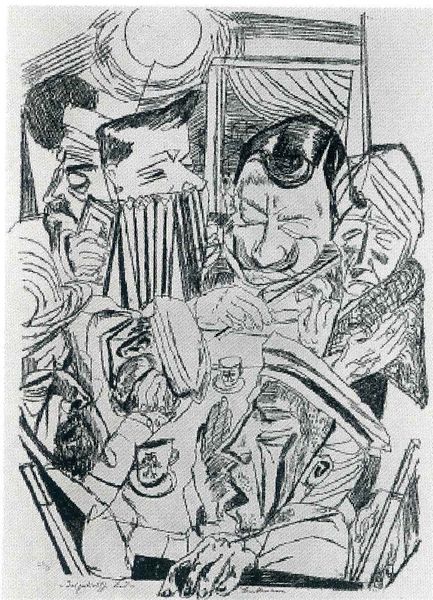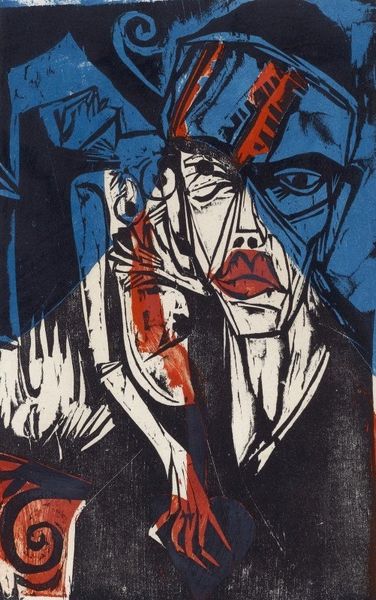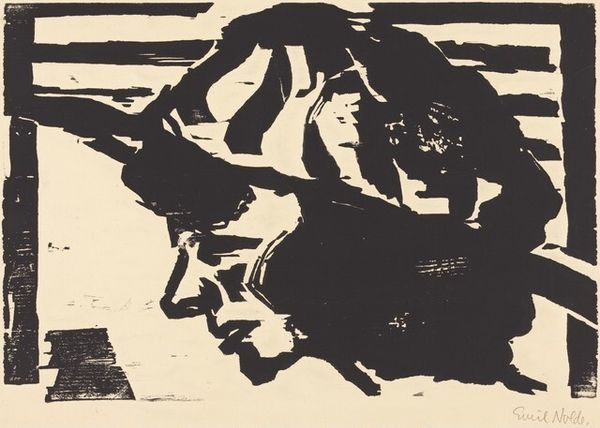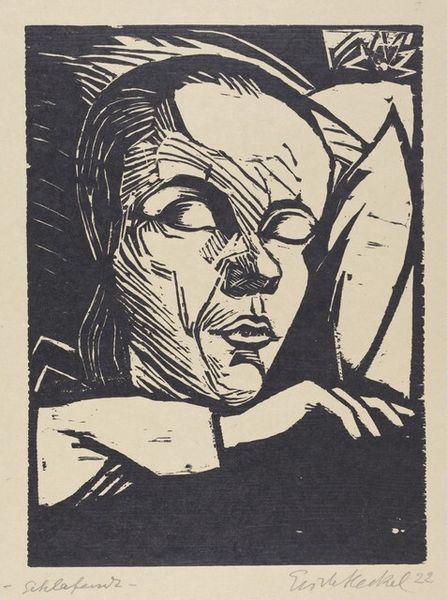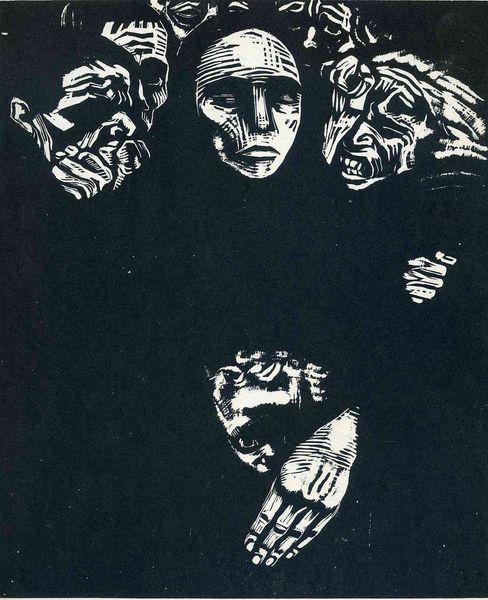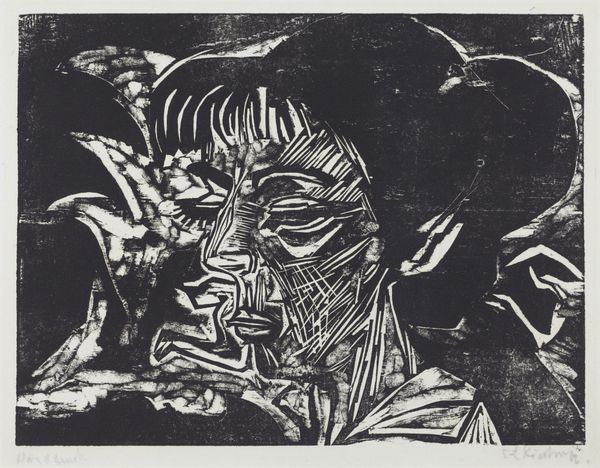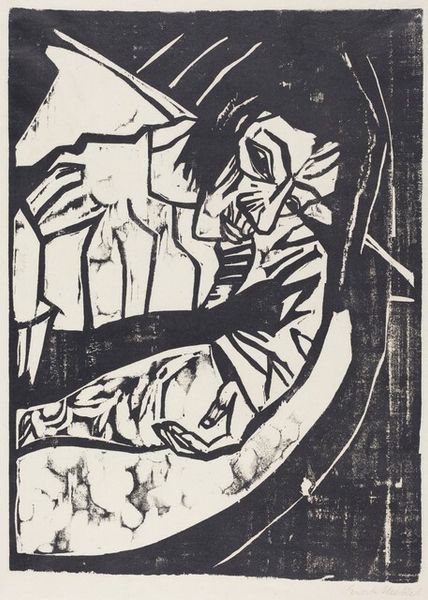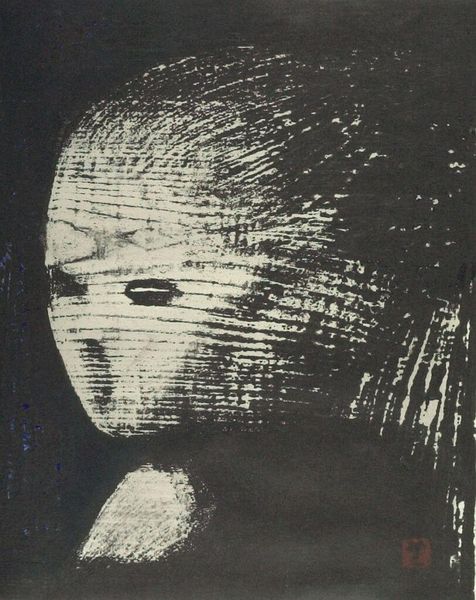
print, woodcut
#
portrait
# print
#
figuration
#
group-portraits
#
expressionism
#
woodcut
#
line
Copyright: Public Domain: Artvee
Curator: Looking at this woodcut, "Bauernpaar in der Hütte," or "Farmer Couple in the Hut," created by Ernst Ludwig Kirchner in 1919, one immediately notices the stark contrasts characteristic of Expressionism. Editor: My first impression is the sheer intensity of the linework. It’s almost brutal, and gives this feeling of… oppression. The use of negative space is quite unsettling. Curator: Indeed. Kirchner made this print shortly after a mental breakdown. Consider the context—the physical and psychological wounds of World War I deeply affected many artists. Here, we see it reflected in the portrayal of rural life, a common subject used to convey national identity. Editor: That makes sense when we think about Kirchner's materials, right? Woodcuts have a long history connected to folk art and popular imagery. And this looks to me like it was carved with such urgency! The roughness wasn't about some return to authentic craft alone but reveals labor in service of direct, forceful expression. Curator: Precisely. The social history is bound to this particular artform as the German Expressionists deliberately rejected traditional fine art techniques in favor of what they perceived as more authentic and accessible modes of production. They saw this rawness as speaking to the working class, a very deliberate political positioning. Editor: You can certainly feel that ethos, especially when viewing it as a reproduction, since each print carries with it the ghost of the labor, the literal act of carving into wood, inking, pressing… I get a real sense of the hand in its making, which amplifies the emotional impact. Curator: The bold lines and distortion were very provocative. Think of this print exhibited at the time—it's meant to challenge the viewer, asking them to confront these raw, emotional realities. It disrupted conventional aesthetics of the time. The role of art as agitator is palpable. Editor: The choice of wood, the forceful carving… it’s as if Kirchner wanted the material itself to scream. I hadn't quite appreciated the social messaging as well as just the emotional urgency. Curator: And the context within which Kirchner and his works existed adds additional layers of meaning. It shifts our perspective, considering its original viewing. Editor: I'll never see a simple woodcut in the same way again. It's exciting to think about all of the people power infused in the piece and see where the piece intersects with wider issues!
Comments
No comments
Be the first to comment and join the conversation on the ultimate creative platform.
